Steelhead, Interrupted
Part III, in the Heart of Steel story series | Part I | Part II
By Ramona DeNies

Want to see the world’s largest steelhead? Try the Skeena River, on the rugged North Coast of British Columbia.
“We’re talking about some of the most powerful wild fish on the planet,” says Greg Knox. As executive director of the nonprofit SkeenaWild—a core Wild Salmon Center partner—he would know. Practically every month of the year, Knox sees steelhead return to this vast, rugged watershed: salmonids that can still surpass 40 pounds, luring anglers from across the planet.
“Skeena steelhead bring a lot of people here to our upriver communities,” says Knox. “But me, I don’t fish for steelhead much anymore.”
It’s not that he lost interest. Of all species in their genus, Knox finds Oncorhynchus mykiss the most fascinating: adventurous, unpredictable, and highly individualistic.
“Most salmonids return to freshwater on a mission to spawn,” Knox explains. “But steelhead are explorers. They’re magical, intelligent, resilient creatures that live beneath the surface, that you sometimes chase around with a fly.”
“Steelhead are explorers. They’re magical, intelligent, resilient creatures that you sometimes chase around with a fly.”
Greg Knox, SkeenaWild Executive Director

Once, steelhead magic felt everywhere; present in watersheds from Kamchatka to Southern California, even marking the start of fishing season for Indigenous communities like the Quileute Tribe. Over millions of years across the North Pacific, steelhead evolved a breathtaking array of adaptive behaviors, from how long a juvenile may linger in-river to how many times it might return home from the ocean to spawn. (Steelhead, unlike other salmonids, aren’t necessarily one-and-done spawners.) Some—rainbow trout—make the choice to never leave freshwater in the first place.
But resilience has limits. Over the last four decades, conservationists like Knox have borne witness to stunning declines in steelhead runs: downward trends that seem to be escalating and extend well beyond Canada. Few agree on the reasons why, driving a debate made even more difficult by a lack of both data and scientific research on the species.

“The mysteries of steelhead add challenges for their conservation,” Knox says. “We know they’re in trouble. But they’re also not as well-studied as commercial fish like sockeye or Chinook. We really haven’t yet figured them out.”
As conservation scientists race to better understand steelhead—and hopefully find solutions—Knox says the least we can do is minimize harm in the meantime. On a personal level, that means keeping his flies in the box.
But he knows that the absence of one angler on an upper Skeena tributary won’t fix the problem. Not when steelhead must survive a lethal obstacle course just to get here.
“The mysteries of steelhead add challenges for their conservation. We know they’re in trouble. But we haven’t yet figured them out.”
Greg Knox, SkeenaWild Executive Director

Here’s what we do know about the great home migration of Skeena steelhead: they first show up on our radar heading east along the Aleutian Islands. These runs travel right through the commercial salmon seine and gillnet fleet off the coast of Southeast Alaska. Then they hit commercial gillnet fisheries at the mouth of the Skeena, followed by First Nations food fisheries on the mainstem. Finally, Skeena steelhead face the sport fisheries that beckon anglers to upriver towns like Terrace and Smithers.
“Skeena steelhead have to survive this gauntlet of dangers to get back home,” Knox says. “We think one of every two gets caught and dies on its home migration, mostly when they’re still out on the open ocean.”

Steelhead, he says, are reeling under this system of “mixed-stock” marine fishing. We don’t know how many steelhead are caught and discarded as bycatch; these numbers are underreported—or not reported at all—in Alaskan and Canadian commercial fisheries. But we do know that very few discarded fish survive to spawn: whether steelhead, sockeye, or chum.
According to Knox and others, collateral damage from mixed-stock marine fishing is a real contributor to the rapid decline of B.C fisheries. In the 1970s and 80s, the province’s total annual salmon catch averaged 24 million fish. Over the last decade, that average has dropped to four million fish or less.
“Skeena steelhead have to survive this gauntlet of dangers to get back home. We think one of every two gets caught and dies on its home migration.”
Greg Knox, SkeenaWild Executive Director
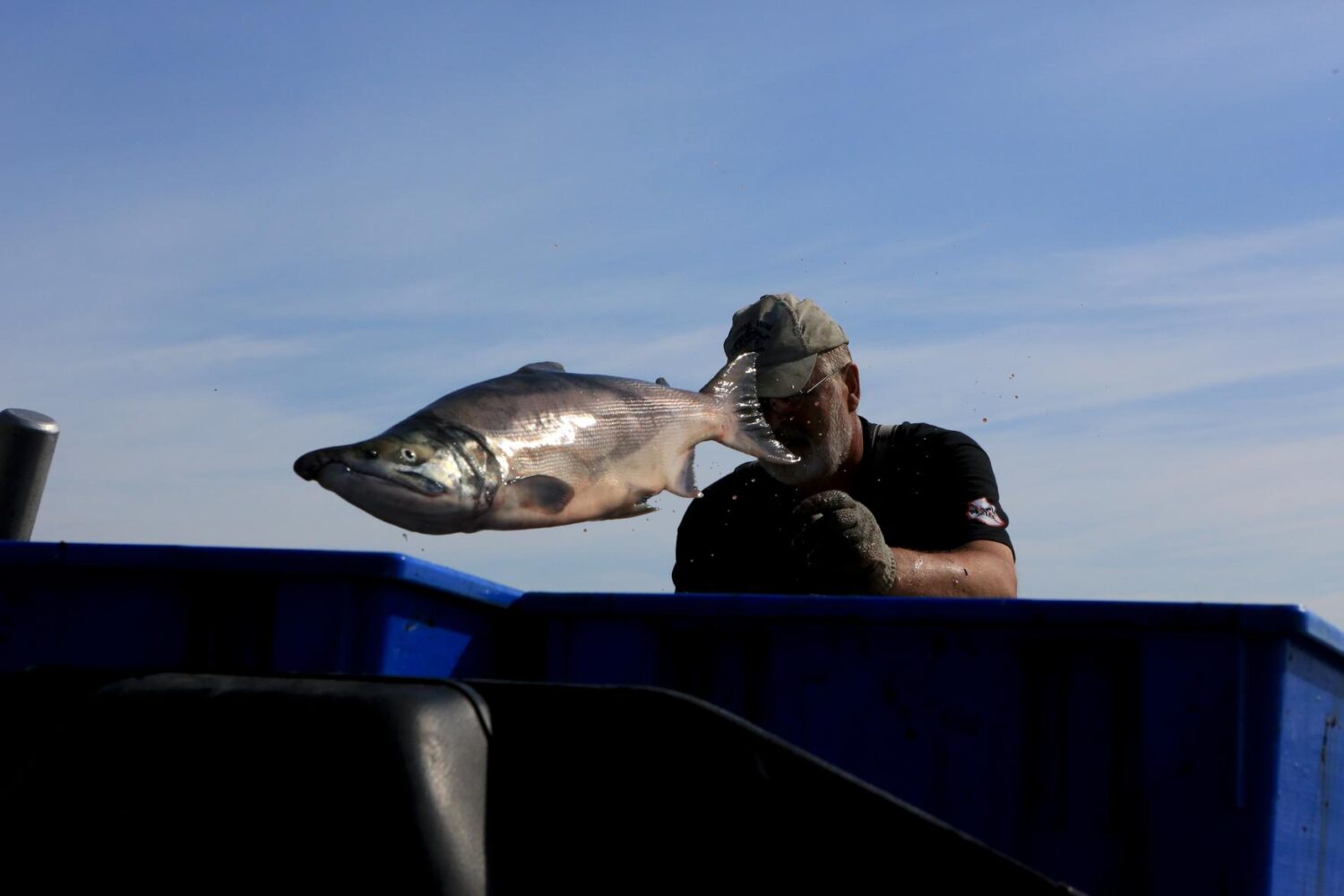
As more scientists dig into steelhead declines, Knox thinks mixed-stock fishing will be spotlighted as a key culprit. Surprisingly, this gives him hope. Because unlike global warming, we can change the way we fish right now—and see results. Knox reminds us that human communities shift gears all the time; we’re adaptable, much like another magical, resilient creature.
“I think we know the future won’t be like the past,” he says. “But that doesn’t mean that we can’t still have healthy steelhead populations, and even harvest them. We just need a different approach. And we’re already headed in the right direction.”
“The future won’t be like the past But that doesn’t mean that we can’t still have healthy steelhead populations, and even harvest them. We just need a different approach.”
Greg Knox, SkeenaWild Executive Director

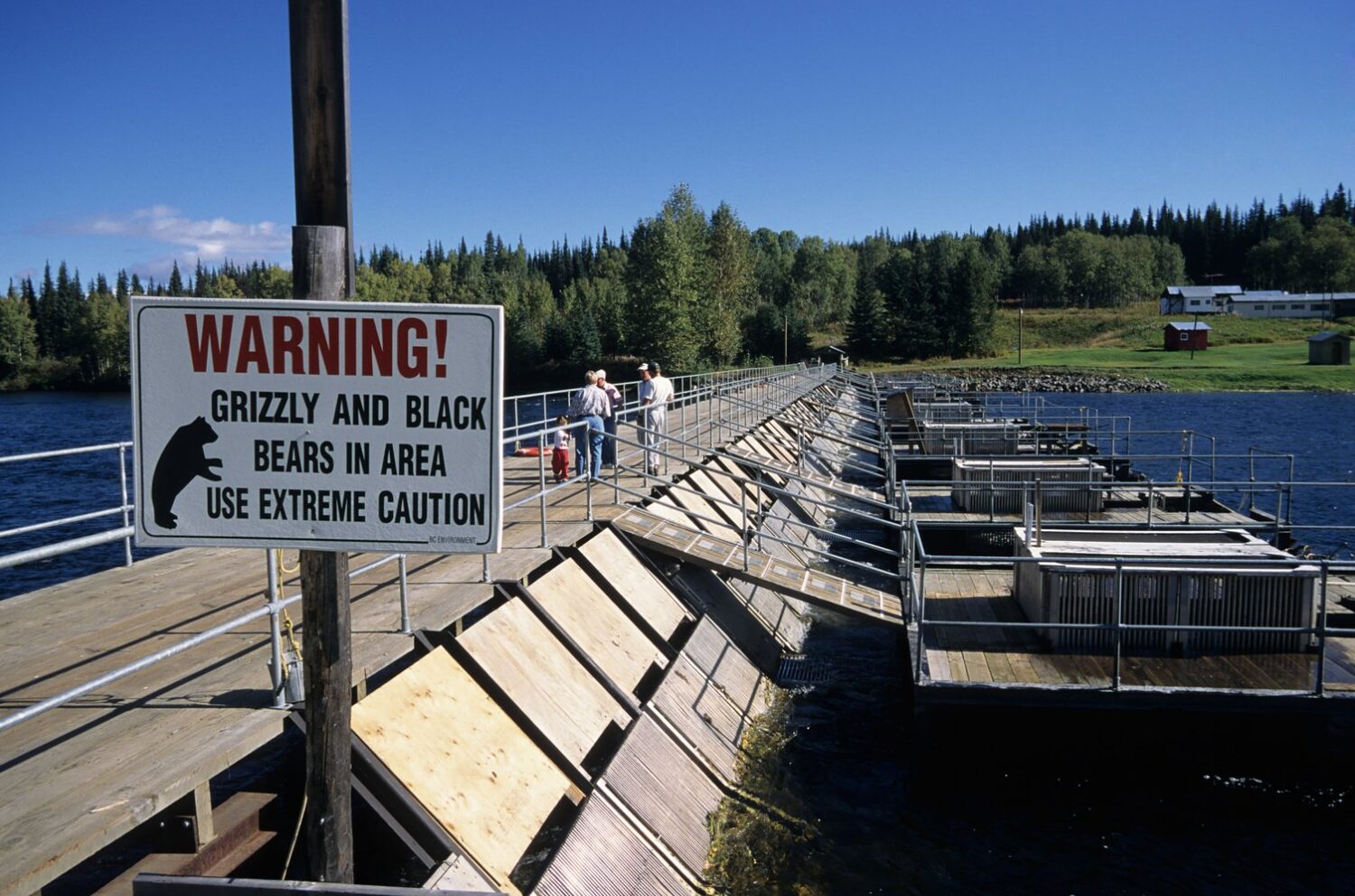
Since the 1940s, Canada’s Department of Fisheries and Oceans has operated a fish counting fence on the Babine River, a main Skeena tributary flowing from the rich salmon spawning habitat of Babine Lake.
The fence wasn’t DFO’s idea. For at least 1,300 years, the ancestors of the Lake Babine Nation operated a vast fish weir exactly here. The fish weir, or fish fence, was constructed of painstakingly engineered wooden panels that enabled families to harvest sockeye on route to Babine Lake.
Weirs, like many other gear types developed by the Indigenous people of the North American West Coast, are highly effective fishing tools. According to the Lake Babine Nation Fisheries, this weir supported an estimated annual harvest of 750,000 sockeye, sustaining a network of large villages while driving trade with other Nations.
These tools also facilitated an intimate relationship between fish runs and the people they fed. Unlike the nets dropped into dark seas by a mixed-stock marine fishing fleet, fishers on a weir know where the salmon are going—and if enough have made it home to feed the community in the future.
This weir supported an estimated annual harvest of 750,000 sockeye, sustaining a network of large villages while driving trade with other Nations.
Lake Babine Nation Fisheries

For millennia, Indigenous selective fishing practices sustained diverse, abundant runs of salmon and steelhead. But in the 1880s, the federal government outlawed weir technology, forcing the closure of scores of First Nation fisheries. In 1905, federal fisheries managers finally dismantled the remote Babine Lake weir. This launched a dark era for the Nation—cut off from the wellspring of physical, economic, and community health, even as DFO appropriated the site for its own use in 1946.

Nearly a century later, a swing toward reconciliation has seen the Lake Babine Nation regain significant control of their fisheries. Since 2007, co-management with DFO has meant the reopening of the Nation’s sockeye fishery, largely on its own terms. And once again, Indigenous fishing technologies are proving their worth.
“The Babine sockeye fishery was the largest in the province in 2022,” says Greg Taylor, a seafood industry and fisheries consultant with the Lake Babine Nation and other communities. “It shows the rest of the coast what’s possible—that you can have successful commercial fisheries and still meet your conservation goals.”
For Taylor, this work also feels personal. A former representative of B.C.’s commercial gillnet fleet, Taylor once rallied against calls for change. But like Knox, he’s also an angler who’s been moved to set aside his fly rod.
“Over time, my views on conservation have certainly shifted,” Taylor says. “It’s been a journey. I used to fish the Skeena. But I’ve seen the steelhead declines. That’s changed as well.”
“The Babine sockeye fishery shows the rest of the coast what’s possible—that you can have successful commercial fisheries and still meet your conservation goals.”
Greg Taylor, fisheries advisor, FirstFirst Consulting
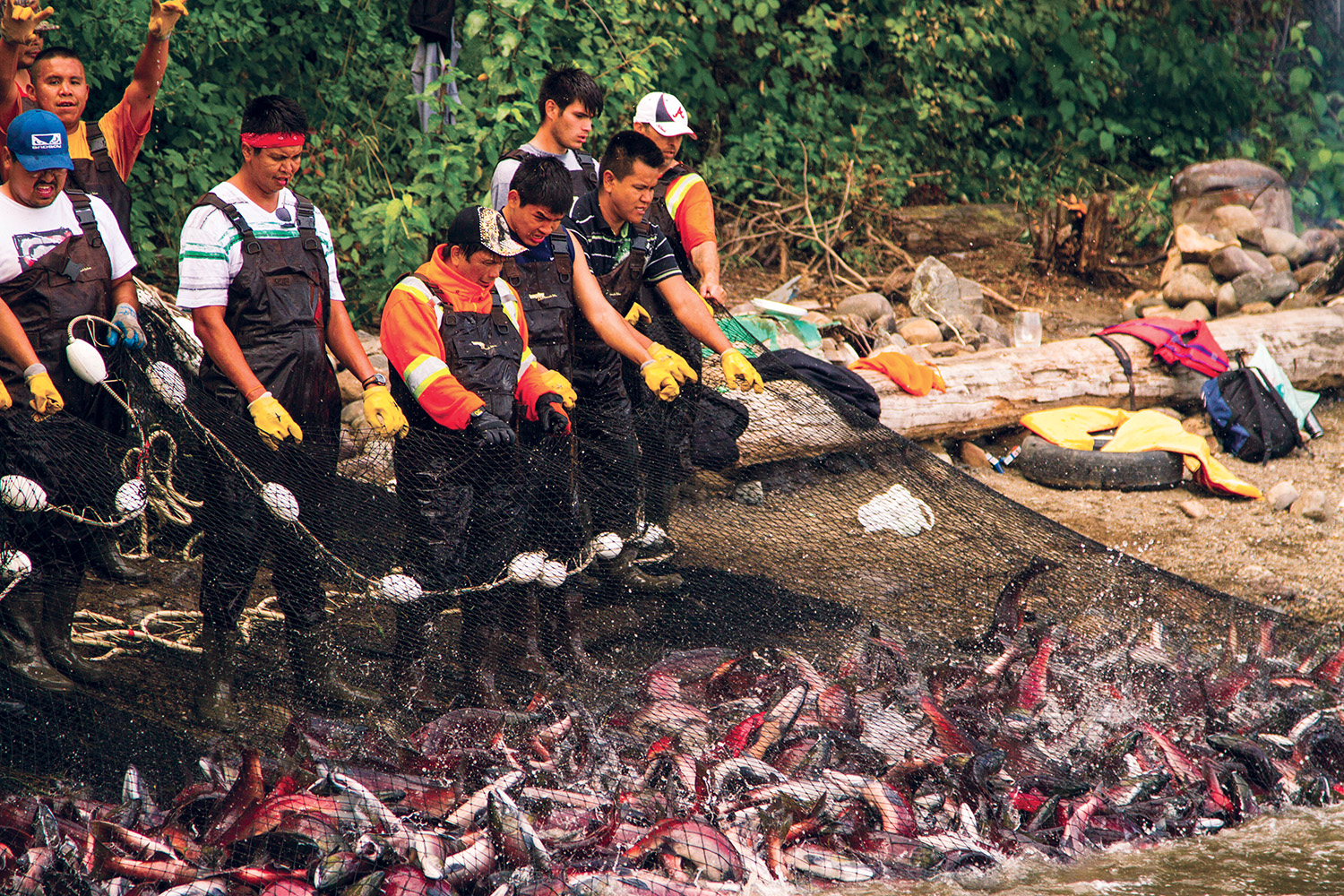
To save both steelhead and other salmon species, Taylor now believes that we must pivot to selective, in-river fisheries. It’s a shift that he says makes economic sense: the Lake Babine Nation sockeye fishery alone creates more than 50 jobs each season. It’s also highly practical.
“Really, let’s face it, all those fish are going to one place, and we know where they’re going,” Taylor says. “Why cast about in the ocean when we know where to catch them for sure?”
After a century of blind-hauling salmon from the sea, Knox and Taylor say we either change the way we fish, or lose the wild runs we love. From fish weirs to reef nets, beach seines to fish traps, some say the solutions have always been close to home.
“All those fish are going to one place, and we know where they’re going. Why cast about in the ocean when we know where to catch them for sure?”
Greg Taylor, fisheries advisor, FirstFirst Consulting

The future won’t look like the past. But according to Dr. Will Atlas, Wild Salmon Center’s Senior Watershed Scientist, the past can give us answers—particularly for steelhead.

For millennia, he says it’s likely that First Nations and Tribes harvested steelhead at much lower rates than other species: fishing practices in sync with the species’ lower overall abundance and heightened vulnerability. What we do know is that for millennia, steelhead thrived on the B.C. coast and beyond, evidenced in the rich genetic biodiversity that we’re just now beginning to comprehensively map. For thousands of years, wild fish runs thrived alongside the selective fishing technologies and practices used by Indigenous communities.
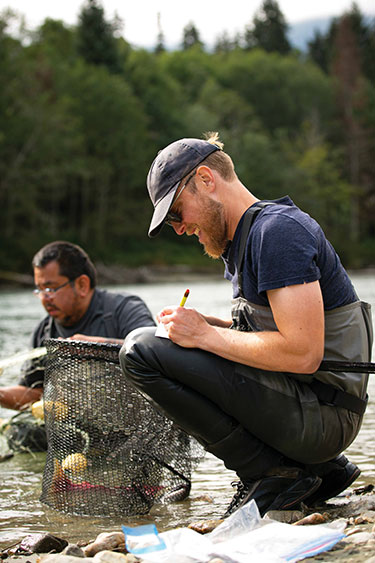
“Steelhead are highly adaptable, but they’re also perhaps the most susceptible of all salmonids to high harvest rates,” Dr. Atlas says. “Because their success hinges on repeat spawners, every steelhead that dies in a net at sea represents the loss of not one but multiple future generations.”
In the North Salish Sea, near the mouth of the Fraser River, the Lummi people built highly engineered reef nets. On the Klamath and Salmon Rivers of Northern California, Tribal elders still pass down the art of dip-netting to their children. And fish traps, like fish weirs, were widespread up and down the West Coast.
“These fishing techniques go back thousands of years,” Dr. Atlas says. “We know they worked, given the sheer abundance of salmon and steelhead at the point of Western contact. And they’re still here.”
“These fishing techniques go back thousands of years. We know they worked, given the sheer abundance of salmon and steelhead at the point of Western contact. And they’re still here.”
WSC Senior Watershed Scientist Dr. Will Atlas

And these traditional technologies are making a comeback. The Lummi Nation, in partnership with local commercial seafood processors, is revitalizing reef nets in the North Salish Sea. On the Columbia River, an experimental pound net—a Western adaptation of traditional fish traps—is winning over chefs and fisheries managers alike. In Summer 2023, the Nuxalk Nation piloted a fish wheel to monitor and selectively harvest salmon on the Bella Coola River. And across B.C., Dr. Atlas and First Nations partners including the Heiltsuk and Gitanyow Nations are launching new artificial intelligence-enabled fish counting weirs that fuse traditional ecological knowledge with cutting-edge machine learning.
“Yes, there’s a lot we still don’t know about steelhead,” Dr. Atlas says. “But a resurgence of Indigenous leadership in fisheries management across the North Pacific is now helping to fill in those data gaps, while giving steelhead room to recover.”
“A resurgence of Indigenous leadership in fisheries management across the North Pacific is now helping to fill in data gaps, while giving steelhead room to recover.”
WSC Senior Watershed Scientist Dr. Will Atlas
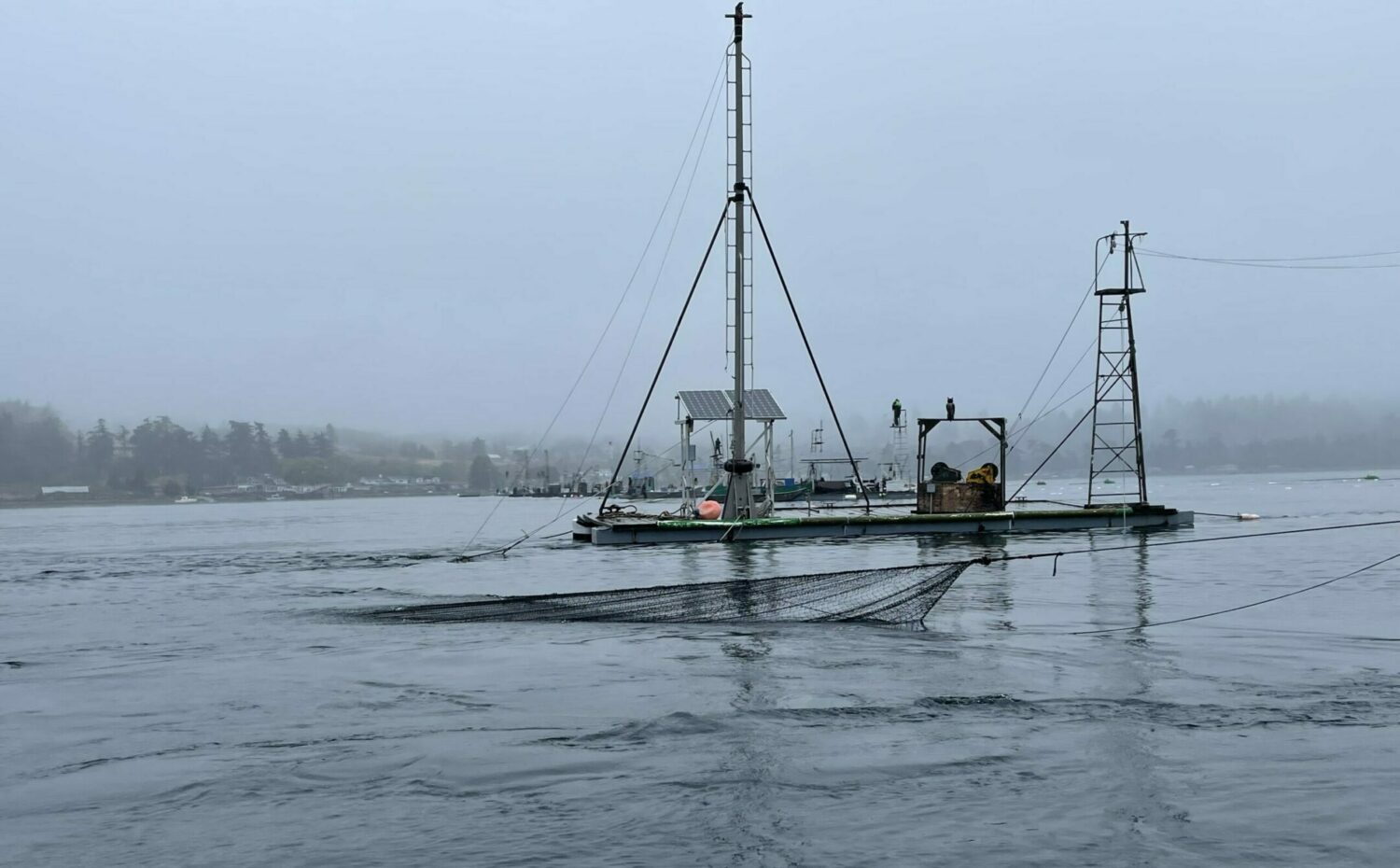
To save steelhead, Dr. Atlas says we should start with what’s worked for millennia: fishing selectively in rivers, closer to home. Knox agrees. It’s why, despite all the heartbreaking charts and trendlines, he has hope.
“Steelhead are so resilient,” Knox says. “If we give them a chance, they can adapt. They can be here again in large numbers. And it might happen more quickly than we might expect.”
For that to happen, we first have to ask: is adaptation truly a trait we share with steelhead? If so, we’ll need to show it. Let’s fix the gauntlet of problems we’ve created for a magical species. Let’s fish smarter, as fellow creatures of coexistence.
“Steelhead are so resilient. If we give them a chance, they can adapt. And it might happen more quickly than we might expect.”
Greg Knox, SkeenaWild Executive Director

